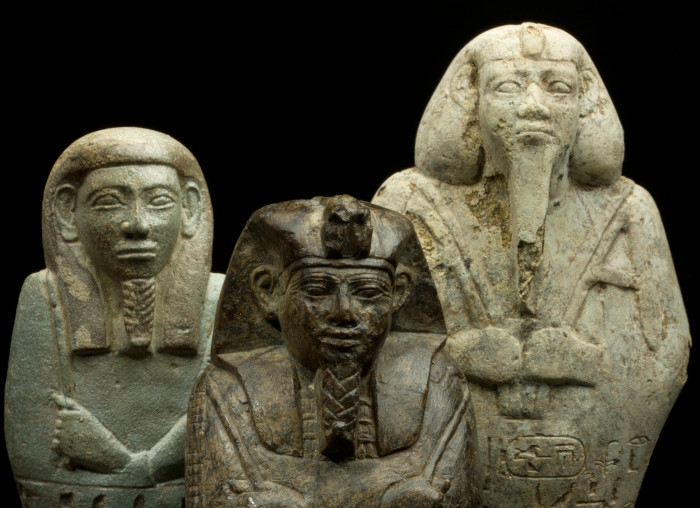Exhibitions
Departments
The earliest inhabitants of Sudan (c. 500 000-8 000 BC)
It was on the vast plateaus of East Africa that humankind evolved. According to archaeological investigations the earliest remains of human presence found in Sudan date back to 500 thousand years ago. It cannot be ruled out, however, that the first human appeared on the banks of the Nile in the Lower Paleolithic, as early as over a million years ago. This was Homo erectus, who may have wandered there from East Africa. Characteristic finds from that time are stone bifacial (worked on both sides) tools referred to by archaeologists as Auchelian bifaces. In the Middle Paleolithic, with the appearance of Homo sapiens who gradually superseded Homo erectus, a new technique of tool manufacturing - Levallois core exploitation - became prevalent.
Acheulian and Middle Paleolithic sites spread along the entire Nile and the Atbara valleys and the surrounding deserts. One of the most representative ones is Khor Abu Anga, where numerous artefacts were found, including the largest assemblage of bifaces in Sudan.
Homo sapiens introduced a number of innovations, enriching the repertoire of raw material used for manufacturing implements as well as new types of tools (such as javelins and later bows and arrows). An illustration of life in this period has been provided, among others, by the research carried out by Polish archaeologists at the Affad Basin in the Middle Nile valley. Campfires and primitive shelters have been discovered there as well as tool manufacturing workshops and animal butchering sites.
The Upper Paleolithic sites are known only from Lower Nubia. Stone tools manufactured at that time were were of smaller sizes than before. Towards the end of this period, in the Quadan culture (15000-9000 BC) some traits characteristic for the Mesolithic appear, including microliths of standardised shapes, testifying to the demand for a large number of replaceable elements for early harvesting tools, stone grinders, and occasional pottery items.
Nasza strona internetowa używa plików cookies (tzw. ciasteczka) w celach statystycznych, reklamowych oraz funkcjonalnych. Dzięki nim możemy indywidualnie dostosować stronę do twoich potrzeb. Każdy może zaakceptować pliki cookies albo ma możliwość wyłączenia ich w przeglądarce, dzięki czemu nie będą zbierane żadne informacje. Dowiedz się więcej jak je wyłączyć. OK, Rozumiem



.jpg)